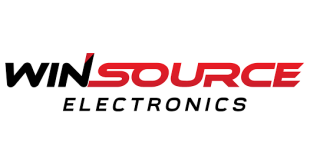 Texas Instruments is expanding its innovative LaunchPad portfolio to the ARM ecosystem, with the launch of a new low-price, easy-to-use Stellaris LM4F120 LaunchPad evaluation kit. The tool allows professional engineers, hobbyists and university students to begin exploring ARM Cortex-M4F microcontrollers and TI’s Stellaris family of microcontrollers for under $5.
Texas Instruments is expanding its innovative LaunchPad portfolio to the ARM ecosystem, with the launch of a new low-price, easy-to-use Stellaris LM4F120 LaunchPad evaluation kit. The tool allows professional engineers, hobbyists and university students to begin exploring ARM Cortex-M4F microcontrollers and TI’s Stellaris family of microcontrollers for under $5.
The core of the new LaunchPad is a Stellaris LM4F120 MCU with best-in-class low power, integrated analogue and floating point performance and lends itself to the highly flexible and modular design environment of the LaunchPad with abundant peripherals for real-time digital signal control. The Stellaris LaunchPad brings consumer electronics, human interface control, health & fitness and many more applications to a wider audience of developers. The kit includes all the hardware and software needed for developers, hobbyists and university students to get started in 10 minutes or less.
The Stellaris LaunchPad is the latest addition to the Texas Instruments LaunchPad ecosystem, a portfolio of low-price evaluation kits and expansion boards that lets engineers experiment and develop with easy-to-use, modular design environments.
The LaunchPad uses the BoosterPack XL connection standard that consists of two pairs of dual gender 20-pin stackable headers. Those forty easy-to-access pins allow interface with external components (BoosterPacks) or custom daughter boards. Two sets of 20 pins on the outer rows of the board have similar functions to the primary header pins on existing MSP430 and C2000 LaunchPad kits, allowing developers to add greater functionality and speed design and exploration. Two inner rows offer an additional 20 pins of Stellaris-based expansion signals for BoosterPack development.
Among the benefits of the Stellaris LM4F120 LaunchPad evaluation kit are that it includes: a 32-bit LM4F120H5QR Cortex-M4 MCU with floating point operating up to 80 MHz that provides targeted performance headroom for application differentiation, 64 KB flash with 100,000 write/erase cycles and two 12-bit 1MSPS ADCs and up to 27 timers, some configurable up to 64-bits; a license- and royalty-free StellarisWare software pre-loaded in ROM to conserve Flash memory; software eases design and allows developers to speed time to market and incorporates USB connectivity and other peripherals including serial ports for UART, I2C, SSI/SPI and CAN controllers so developers can support the communication standard best suited for their application.
 CIE Components in Electronics
CIE Components in Electronics


